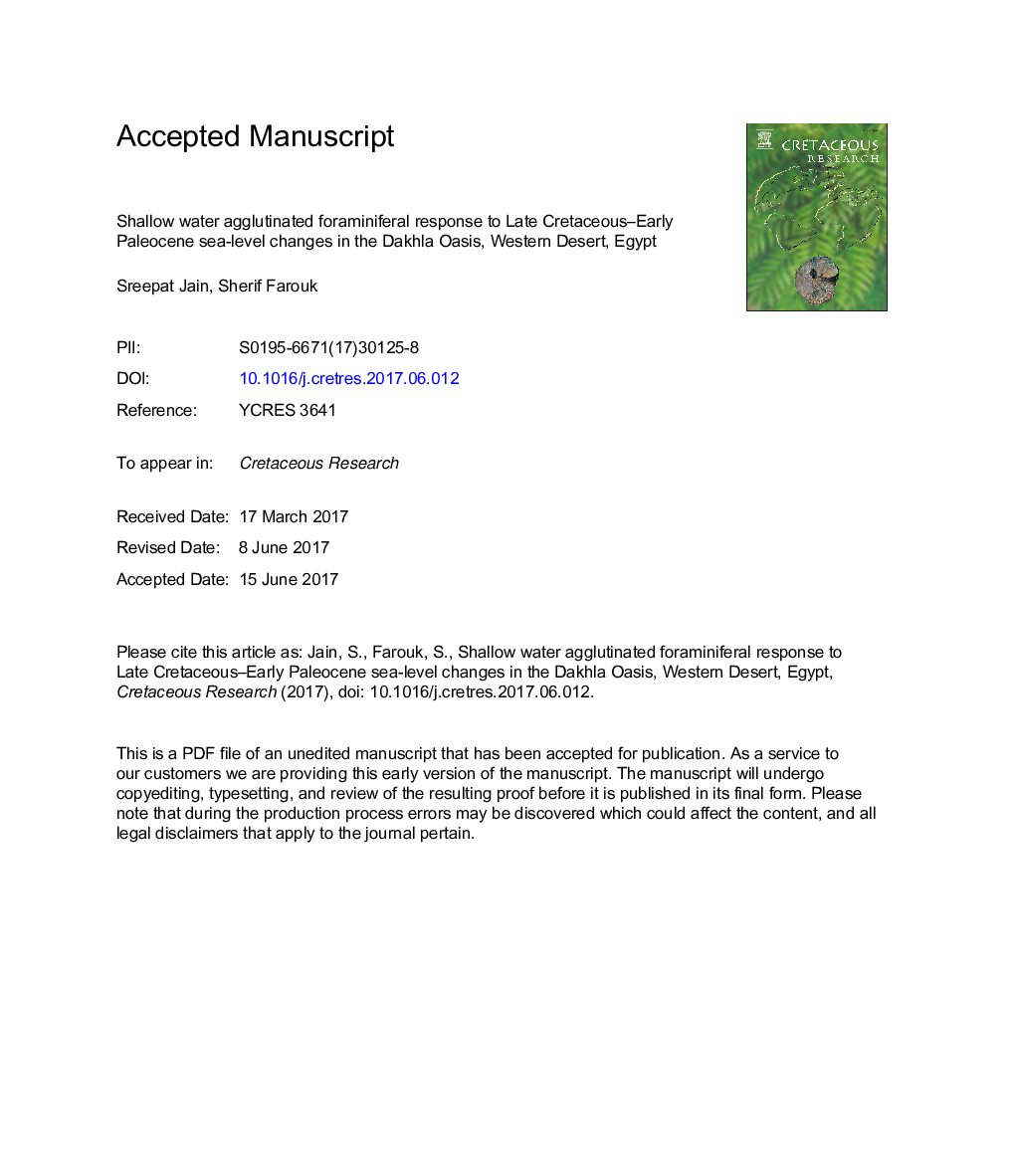| Article ID | Journal | Published Year | Pages | File Type |
|---|---|---|---|---|
| 5787926 | Cretaceous Research | 2017 | 37 Pages |
Abstract
The Late Cretaceous (Maastrichtian) to early Paleocene (Thanetian) shallow water (<100Â m) agglutinated foraminifera from a section at Dakhla Oasis (Western Desert, Egypt) were analyzed for their assemblage, species and genera distribution, diversity, depositional environment, community structure and palaeobathymetry with respect to regional tectonics, climate and global eustasy. Data suggest an equitable benthic environment with low species dominance deposited in a brackish littoral and/or marsh setting. Sea level curves using characteristic benthic foraminiferal species, genera and assemblages corroborate quantitatively generated estimate and statistical analysis. Data suggests that in the absence of or of an impoverished benthic foraminiferal fauna, a high resolution agglutinated foraminiferal dataset can be as good a predictor of the benthic community structure and environment, as its calcareous counterpart, at least for shallow settings (<100Â m). Present data also provides a good window in better understanding the distribution and interrelationship between the three dominant genera, Haplophragmoides, Trochammina and Ammobaculites. Faunal changes at boundaries (Cretaceous/Paleogene, Danian/Selandian and Selandian/Thanetian) are also evaluated.
Related Topics
Physical Sciences and Engineering
Earth and Planetary Sciences
Palaeontology
Authors
Sreepat Jain, Sherif Farouk,
